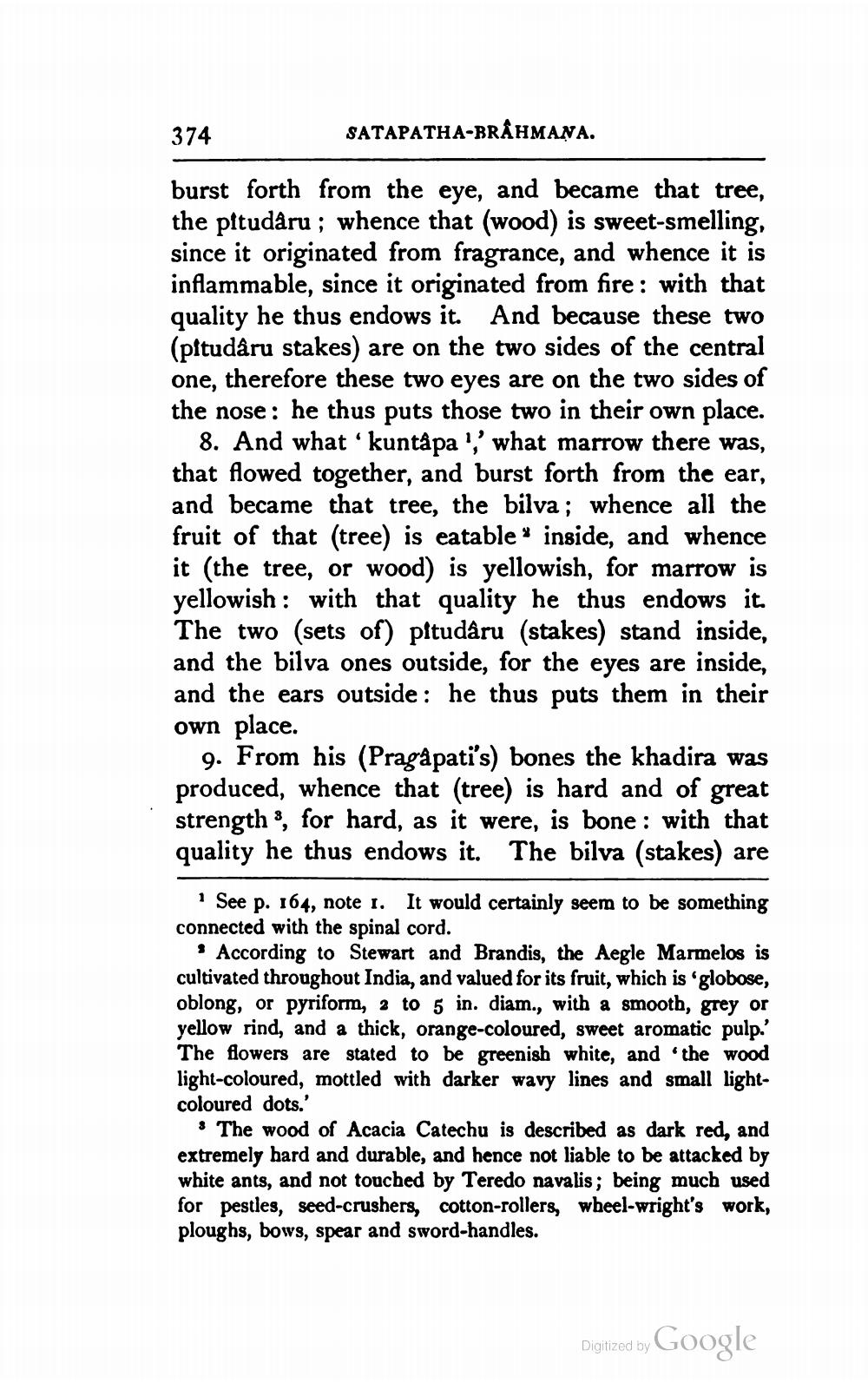________________
374
SATAPATHA-BRÂHMANA.
burst forth from the eye, and became that tree, the pitudaru ; whence that (wood) is sweet-smelling, since it originated from fragrance, and whence it is inflammable, since it originated from fire: with that quality he thus endows it. And because these two (pitudâru stakes) are on the two sides of the central one, therefore these two eyes are on the two sides of the nose: he thus puts those two in their own place.
8. And what' kuntåpa ',' what marrow there was, that flowed together, and burst forth from the ear, and became that tree, the bilva; whence all the fruit of that (tree) is eatable * inside, and whence it (the tree, or wood) is yellowish, for marrow is yellowish : with that quality he thus endows it. The two (sets of) pitudaru (stakes) stand inside, and the bilva ones outside, for the eyes are inside, and the ears outside: he thus puts them in their own place.
9. From his (Praga pati's) bones the khadira was produced, whence that (tree) is hard and of great strength, for hard, as it were, is bone : with that quality he thus endows it. The bilva (stakes) are
See p. 164, note 1. It would certainly seem to be something connected with the spinal cord.
• According to Stewart and Brandis, the Aegle Marmelos is cultivated throughout India, and valued for its fruit, which is globose, oblong, or pyriform, 2 to 5 in. diam., with a smooth, grey or yellow rind, and a thick, orange-coloured, sweet aromatic pulp.' The flowers are stated to be greenish white, and the wood light-coloured, mottled with darker wavy lines and small lightcoloured dots.'
* The wood of Acacia Catechu is described as dark red, and extremely hard and durable, and hence not liable to be attacked by white ants, and not touched by Teredo navalis; being much used for pestles, seed-crushers, cotton-rollers, wheel-wright's work, ploughs, bows, spear and sword-handles.
Digitized by Google




